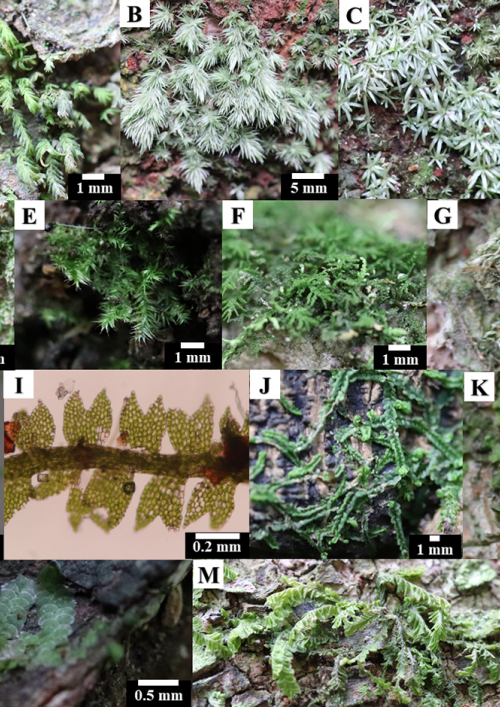Effects of Forest Restoration Age on Species Diversity of Epiphytic Bryophyte Community

FORRU Contributors
ABSTRACT: Forest restoration is re-establishing forest in disturbed areas. This is resulting in differences of biodiversity between restoration and natural forest - including the diversity of epiphytic bryophytes. Thus, this research determined the species diversity and compared epiphytic bryophyte community among framework species restoration plots established by the Forest Restoration Research Unit (FORRU), Chiang Mai University aged 21 and 13 years (since tree plating) and a remnant of old-growth forest, Dong Seng Forest, Mae Sa Mai Village, Mae Rim District, Chiang Mai Province. The surveys were carried in June 2019.
Fifteen species in 14 genera and 12 families of epiphytic bryophytes were found on the bark of Archidendron clypearia (Jack) I.C.Nielsen (Thai name: Mah Kham Pae), Erythrina stricta Roxb. (Thai name: Tawng Lahng Bah) and Sarcosperma arboreum Hook.f. (Thai name: Mah Yang). Epiphytic bryophytes were divided into 3 groups, i.e., acrocarpous mosses 4 species (26.67%), pleurocarpous mosses 5 species (33.33%) and leafy liverworts 6 species (40.00%). The species richness of epiphytic bryophytes did not differ between two forest restoration ages. The epiphytic bryophyte community in older restoration forest was more similar to that of the old-growth forest than that of the younger plots. Therefore, as forest restoration progresses, the species composition of the epiphytic bryophyte community becomes more similar to that of natural forest.

